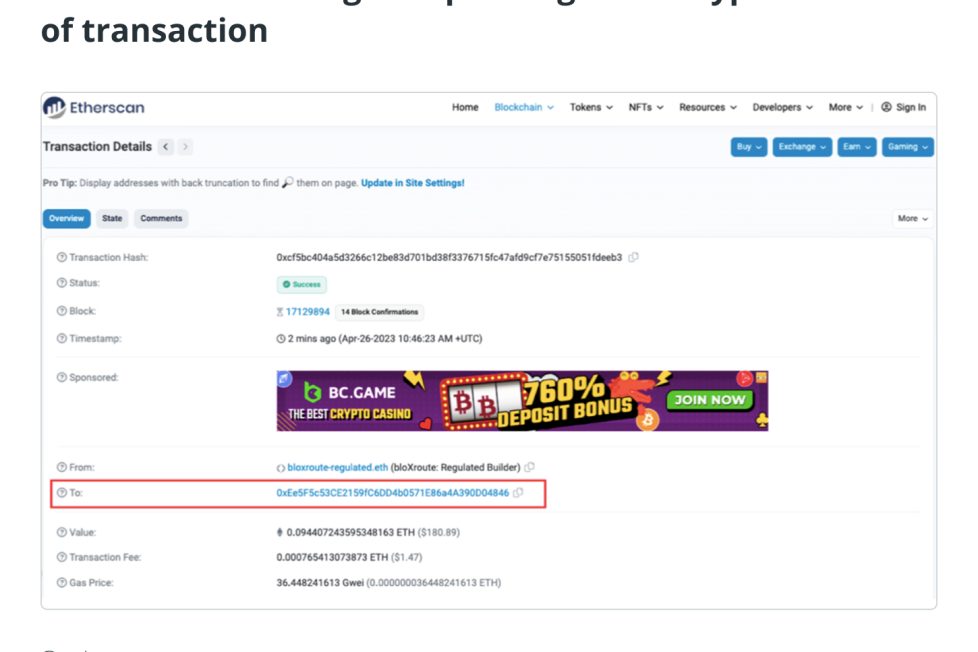How to check an Ethereum transaction

A transaction on the
Step 3: Click the icon for “search” or “enter” on the blockchain explorer
How to know if an ETH transaction was successful: Details indicating the state of the transaction will appear on the blockchain explorer. If the transaction was successfully validated and is now on the blockchain, it will say “success” or “successful.”
If there are no errors displayed, it means that the transaction was completed successfully. The ETH should be credited to the destination wallet or exchange account within 24 hours of sending.
In the event of an Ether transaction failure, on the other hand, several error messages can appear:
Related: ????How to sell Ethereum: A beginner’s guide to selling ETH
An average transaction on the Ethereum blockchain will typically take between 15 seconds and five minutes to process, depending on several factors. These include the amount paid to process it (transaction fee) and how busy the network is at the time of processing.
Ethereum transitioned from a proof-of-work to a proof-of-stake blockchain after the Merge. However, transaction speeds remain roughly the same. According to the Ethereum Foundation, it’s a common misconception that the Merge drastically sped up transactions.
However, there’s a slight difference, with slots occurring precisely every 12 seconds post-Merge compared with every 13.3 seconds pre-Merge. In any case, the change is barely noticeable by most users, as processing still usually depends on network congestion and transaction fees.
When a transaction is initiated, it is logged into Ethereum’s memory pool (mempool) and waits for validators to pick it up. The mempool functions much like a waiting room where pending transactions are held.
Once a validator enters transaction data into a block and adds the block to the blockchain, the transaction is considered complete. It is said to be finalized and irreversible after six additional blocks have been mined and added on top of it.
By checking a transaction’s status, traders can confirm whether their transaction has succeeded or failed and how many blocks have been created since their transaction was added to the chain.
Ethereum participants must pay gas fees to use the network to transfer funds or deploy smart contracts. The fees largely depend on the number of participants waiting to execute transactions at a given time.
Network congestion and demand are thus directly proportional to transaction costs. When demand is high, costs rise — the opposite is true when demand is low. In any case, checking a transaction’s status helps a trader monitor the cost of using the network.
It can also help users determine if the gas fee they paid is sufficient to have their transaction confirmed. Low gas fees can usually truncate or delay transactions, leaving them to remain pending for long periods of time, especially during high network congestion.
Such transactions will remain pending until the gas fees reach the required minimum fees on the network. If this happens, a user can resend the transaction by resubmitting it and increasing the gas fee while ensuring it carries the same nonce.
In addition to transaction status, Ethereum blockchain explorers can also reveal the following helpful information:
By being aware of the above, traders can stay on top of their ETH transactions and make sure transactions are processed correctly and quickly. This helps to ensure smooth Ethereum transactions when sending and receiving funds or deploying smart contracts. Understanding a transaction’s status can also help users adjust their spending habits and optimize network usage.
